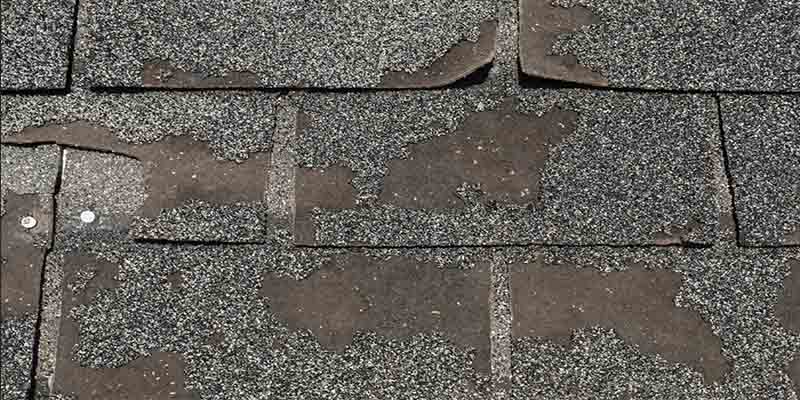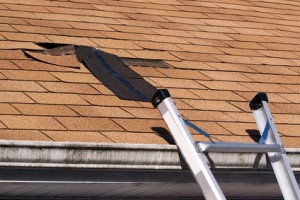Comprehending the Different Kinds Of Roofing Systems: A Comprehensive Overview for Homeowners
With a range of choices-- varying from the typical gable to the contemporary flat-- each kind provides distinct advantages and obstacles that must align with the house owner's particular demands and ecological factors to consider. As we check out the complexities of numerous roofing system kinds, it ends up being obvious that one dimension does not fit all; the best choice may stun you.
Saddleback Roof
Gable roofs, defined by their triangular shape, are amongst the most prominent roof covering styles as a result of their simpleness and performance in shedding water and snow. This design features two sloping sides that satisfy at a ridge, allowing for effective drain and lessening the threat of water build-up. The steep pitch frequently connected with gable roofing systems enhances their capacity to manage hefty rainfall, making them ideal for numerous climates.
Along with their practical advantages, gable roofs provide visual adaptability. They can be adapted to various building designs, from typical to modern-day homes. The layout can likewise fit additional features such as dormer windows, which boost natural light and ventilation in the attic area.
Moreover, saddleback roofs offer enough room for insulation, contributing to power efficiency. House owners can pick from a range of roof covering materials, consisting of asphalt tiles, metal, and ceramic tiles, better improving customization options.
Regardless of their benefits, saddleback roofs may need extra support in areas prone to high winds or heavy snowfall. Overall, the gable roof covering continues to be a popular selection due to its mix of capability, longevity, and aesthetic charm.
Flat Roofs
Level roofings are usually acknowledged for their minimal design and functional applications, specifically in industrial and industrial setups (oahu roofing). These roofs include a horizontal or almost straight surface, which permits easy construction and flexible space utilization. While they might lack the aesthetic allure of pitched roofings, flat roofing systems supply countless benefits, particularly in metropolitan settings where maximizing space is essential
Among the main advantages of level roof coverings is their ease of access. Home owners can make use of the roofing system area for various purposes, such as roof yards, terraces, or photovoltaic panel installments. Furthermore, flat roofs are normally a lot more cost-efficient to set up and maintain contrasted to their sloped counterparts, as they call for fewer products and labor.
Nonetheless, level roofings do present certain difficulties. Proper drain is important to stop water merging, which can result in leakages and architectural damages. Hence, choosing top quality waterproofing products and regular assessments are essential for making certain longevity. Usual materials utilized for flat roofing systems include built-up roof (BUR), modified bitumen, and single-ply membranes, each offering unique benefits. In general, level roofing systems work as a versatile and useful selection for lots of homeowners and companies alike.
Hip Roofings
Hip roofs are characterized by their sloped sides that assemble on top, developing a ridge. This design is distinctive from saddleback roofs, as all 4 sides of a hip roof covering slope downwards toward the wall surfaces, giving a much more secure framework. The angle of the slopes can differ, permitting convenience in building aesthetic appeals and capability.
One of the primary benefits of hip roofings is their capability to endure hefty winds and damaging climate condition. The sloped surface areas make it possible for better water drain, reducing the danger of leaks and water damages. Additionally, hip roof coverings use boosted attic room, which can be made use index of for storage space or perhaps transformed right into habitable areas.
Nevertheless, constructing a hip roofing can be much more intricate and expensive than easier roofing types, such as saddleback roofs. The extra material and labor associated with creating the inclines and making certain correct architectural honesty can result in greater costs. In spite of these drawbacks, lots of house owners prefer hip roofings for their longevity, visual charm, and potential for power effectiveness.
Mansard Roofing Systems
Mansard roofings, often recognized by their special four-sided design, function 2 inclines on each side, with the lower incline being steeper than the top. This architectural design, stemming from France in the 17th century, is not only visually attractive however useful, as it takes full advantage of the functional room in the upper floorings of a structure. The steep lower incline permits even more headroom, making it an optimal option for lofts or attic rooms, which can be converted right into living areas.
Mansard roofings are defined by their adaptability, suiting numerous building designs, from standard to modern. They can be created with different materials, consisting of asphalt shingles, slate, or metal, supplying property owners with a series of choices to fit their spending plans and choices. In addition, the style permits the integration of dormer windows, boosting all-natural light and ventilation in the top degrees.
However, it is necessary to consider the potential disadvantages. Mansard roofs might require even more upkeep because of the intricacy of their layout, and their steep inclines can be challenging for snow and rainfall drainage. Generally, mansard roof coverings incorporate sophistication with functionality, making them a preferred choice amongst property owners looking for distinctive building attributes.
Lost Roof Coverings
As home owners increasingly look for simpleness and functionality in their architectural layouts, shed roof coverings have emerged as a popular option. Defined by a solitary sloping aircraft, a shed roof provides a minimalist visual that matches different home styles, from modern to rustic.
Among the my review here primary advantages of a shed roofing is its uncomplicated building and construction, which usually translates to decrease labor and product prices. This design enables reliable water drain, decreasing the threat of leakages and water damage. In addition, the upright incline gives enough area for skylights, improving all-natural light within the interior.
Dropped roof coverings likewise supply flexibility in terms of usage. They can be properly incorporated right into additions, garages, or exterior frameworks like pavilions and sheds. Additionally, this roof design can suit numerous roof covering products, consisting of metal, asphalt tiles, or also environment-friendly roofing systems, aligning with eco-friendly efforts.
Nonetheless, it is necessary to consider regional climate conditions, as heavy snow loads might demand adjustments to the roof's go to this web-site angle or framework. In general, dropped roofings provide a functional and aesthetically pleasing choice for property owners looking to take full advantage of performance without jeopardizing design.
Conclusion


Gable roofing systems, identified by their triangular form, are among the most popular roof designs due to their simplicity and effectiveness in shedding water and snow. oahu roofing. The steep pitch typically connected with gable roofs enhances their capacity to manage hefty precipitation, making them appropriate for different climates
While they may lack the aesthetic appeal of pitched roof coverings, level roof coverings use various benefits, specifically in city atmospheres where maximizing room is essential.
